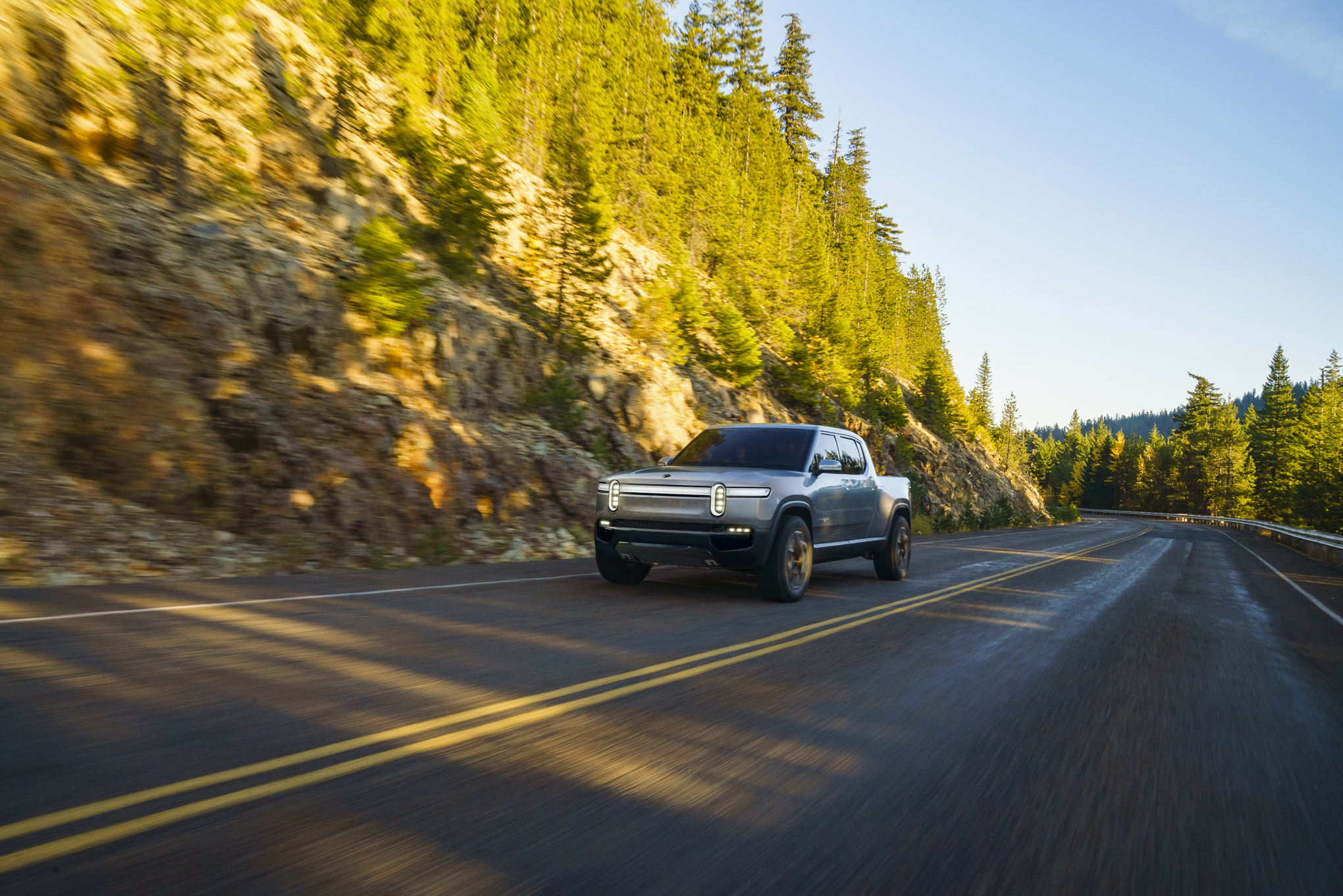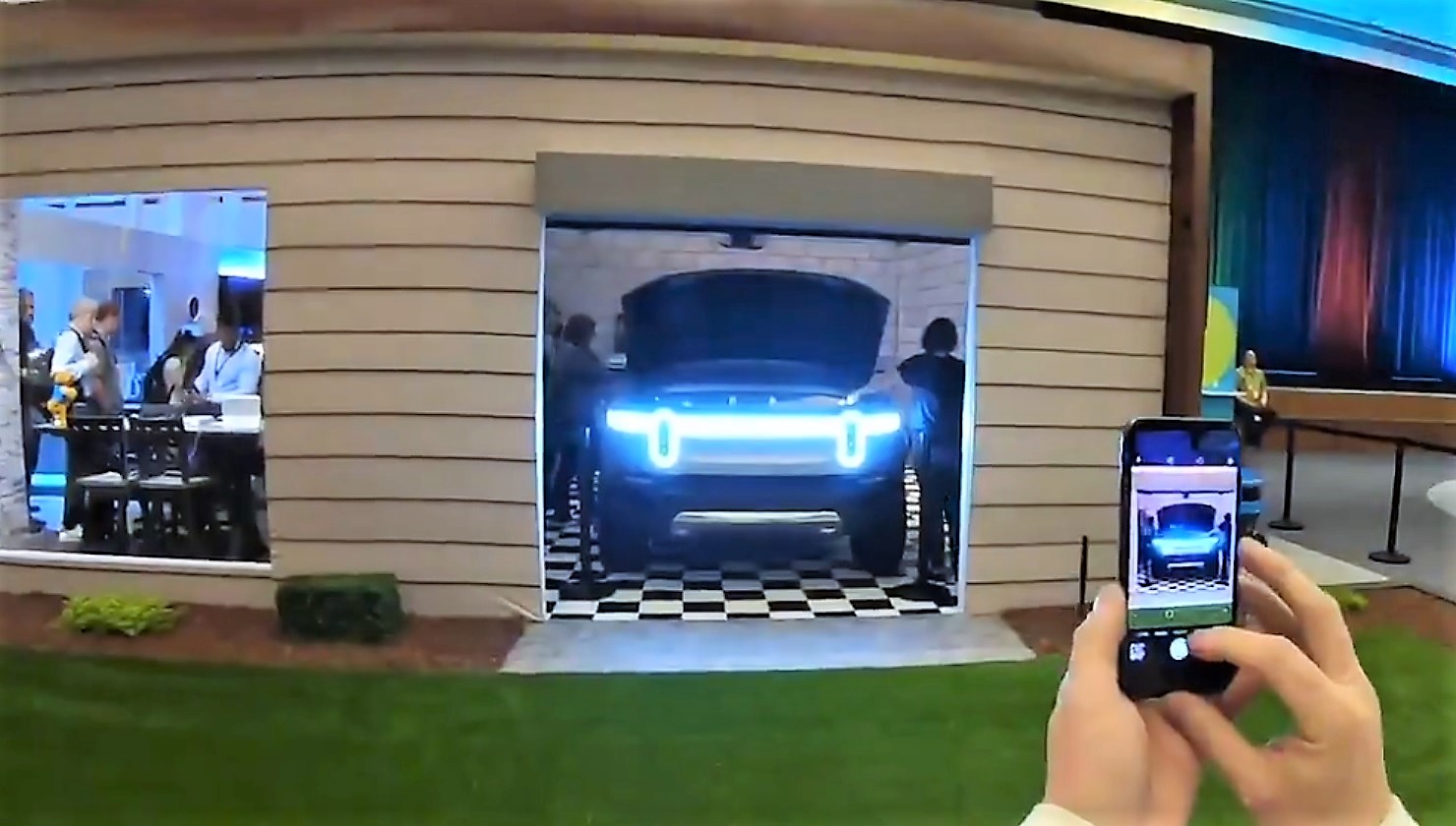

News
Rivian’s full self-driving suite is designed to ignore an inattentive driver’s input
Rivian’s CEO RJ Scaringe has teased Jurassic Park-style self-driving tours with the company’s all-electric R1T pickup truck and R1S SUV several times now, but specific details on the car maker’s autonomy approach have been few and far between. Oliver Jeromin, Rivian’s Associate Director of Self-Driving, recently shed some light on the matter during an interview with TechCrunch.
“We want to embrace the challenge,” Jeromin said in response to a question over Rivian’s goal of bringing Level 3 autonomous driving to its vehicles versus other approaches. “There are mobility companies that are working on Level 4, and they’re looking at it kind of from the top down, coming from 4 or 5 for more fleet applications possibly… We want to get a feature into our customers hands sooner than possibly some of those other systems might be fully vetted,” he said.
Rivian’s electric lineup will enable this type of self-driving capability using a suite of cameras, radar, ultrasonic sensors, high-precision GPS technologies, and two cleverly-placed LiDAR. Such features are similar to those found in Tesla’s cars for the same purpose; however, where the two companies differ at the moment is notable. Rivian’s system is being developed to have a two-part monitoring system determining its full self-driving suite’s behavior based on driver input rather than a single requirement for hands to be on the steering wheel.

“We’re building a driver-monitoring system so it’s not just one sensor like a torque input sensor – like if a driver actually wants to disengage the longitudinal and lateral controller,” Jeromin explained. “There going to be a driver-monitoring camera, and there’s also going to be hands-on wheel sensors.”
In other words, Rivian’s full self-driving system will ignore driver input unless it is determined to be intentional. A Level 3 self-driving system can handle most aspects of driving, so if a driver wants their vehicle to behave differently than its programming is carrying out, the car will use the camera and sensors in the cabin to determine whether to proceed. If, say, the wheel is bumped from the driver shifting around in their seat for some reason, the safety procedures will know it was an accident.
“It’s really trying to determine the driver’s intention because if…you inadvertently give the steering input to the steering controller…the driver monitoring camera will see that you’re not looking at the road, and you also don’t have both hands on the wheel,” Jeromin clarified. “So, we’ll have to ignore that input from the human to understand that they’re not intending to change lanes. They’re actually just doing something else while the vehicle is in control.”
Tesla has also installed cameras to monitor activity in vehicle cabins, but the purpose isn’t exactly to monitor the driver’s intentions. Rather, Tesla Network passengers will be recorded to ensure any damages caused can be remedied. “It’s there for when we start competing with Uber/Lyft & people allow their car to earn money for them as part of the Tesla shared autonomy fleet. In case someone messes up your car, you can check the video,” CEO Elon Musk replied on Twitter to a Tesla owner’s inquiry about the tiny camera inside the rear view mirror. “Also, it can be used to supplement cameras on outside of vehicle, as it can see through 2nd side windows & rear window…Only external cameras are being used right now, so internal is not enabled. When it is enabled, we’ll add a setting to disable internal camera.”
As Rivian continues to develop its manufacturing process to bring the R1S and R1T to market, it will be interesting to also see what differences and similarities the car maker will have with other companies working on full self-driving vehicle software. Tesla has billions of miles in Autopilot-driven customer data to use for training of its self-driving program, so perhaps Rivian will eventually share its plan to close the gap.
Watch TechCrunch’s full interview with Rivian’s staff below:

News
Tesla Cybercab tests are going on overdrive with production-ready units
Tesla is ramping its real-world tests of the Cybercab, with multiple sightings of the vehicle being reported across social media this week.

Tesla is ramping its real-world tests of the Cybercab, with multiple sightings of the autonomous two-seater being reported across social media this week. Based on videos of the vehicle that have been shared online, it appears that Cybercab tests are underway across multiple states.
Recent Cybercab sightings
Reports of Cybercab tests have ramped this week, with a vehicle that looked like a production-ready prototype being spotted at Apple’s Visitor Center in California. The vehicle in this sighting was interesting as it was equipped with a steering wheel. The vehicle also featured some changes to the design of its brake lights.
The Cybercab was also filmed testing at the Fremont factory’s test track, which also seemed to involve a vehicle that looked production-ready. This also seemed to be the case for a Cybercab that was spotted in Austin, Texas, which happened to be undergoing real-world tests. Overall, these sightings suggest that Cybercab testing is fully underway, and the vehicle is really moving towards production.
Production design all but finalized?
Recently, a near-production-ready Cybercab was showcased at Tesla’s Santana Row showroom in San Jose. The vehicle was equipped with frameless windows, dual windshield wipers, powered butterfly door struts, an extended front splitter, an updated lightbar, new wheel covers, and a license plate bracket. Interior updates include redesigned dash/door panels, refined seats with center cupholders, updated carpet, and what appeared to be improved legroom.
There seems to be a pretty good chance that the Cybercab’s design has been all but finalized, at least considering Elon Musk’s comments at the 2025 Annual Shareholder Meeting. During the event, Musk confirmed that the vehicle will enter production around April 2026, and its production targets will be quite ambitious.
News
Tesla gets a win in Sweden as union withdraws potentially “illegal” blockade
As per recent reports, the Vision union’s planned anti-Tesla action might have been illegal.

Swedish union Vision has withdrawn its sympathy blockade against Tesla’s planned service center and showroom in Kalmar. As per recent reports, the Vision union’s planned anti-Tesla action might have been illegal.
Vision’s decision to pull the blockade
Vision announced the blockade in early December, stating that it was targeting the administrative handling of Tesla’s facility permits in Kalmar municipality. The sympathy measure was expected to start Monday, but was formally withdrawn via documents sent to the Mediation Institute and Kalmar Municipality last week.
As noted in a Daggers Arbete report, plans for the strike were ultimately pulled after employer group SKR highlighted potential illegality under the Public Employment Act. Vision stressed its continued backing for the Swedish labor model, though Deputy negotiation manager Oskar Pettersson explained that the Vision union and IF Metall made the decision to cancel the planned strike together.
“We will not continue to challenge the regulations,” Petterson said. “The objection was of a technical nature. We made the assessment together with IF Metall that we were not in a position to challenge the legal assessment of whether we could take this particular action against Tesla. Therefore, we chose to revoke the notice itself.”
The SKR’s warning
Petterson also stated that SKR’s technical objection to the Vision union’s planned anti-Tesla strike framed the protest as an unauthorized act. “It was a legal assessment of the situation. Both for us and for IF Metall, it is important to be clear that we stand for the Swedish model. But we should not continue to challenge the regulations and risk getting judgments that lead nowhere in the application of the regulations,” he said.
Vision ultimately canceled its planned blockade against Tesla on December 9. With Vision’s withdrawal, few obstacles remain for Tesla’s long-planned Kalmar site. A foreign electrical firm completed work this fall, and Tesla’s Careers page currently lists a full-time service manager position based there, signaling an imminent opening.
News
Tesla Semi program Director teases major improvements

Tesla Semi Program Director Dan Priestly teased the major improvements to the all-electric Class 8 truck on Thursday night, following the company’s decision to overhaul the design earlier this year.
Priestley said he drove the Semi on Thursday, and the improvements appear to be welcomed by one of the minds behind the project. “Our customers are going to love it,” he concluded.
Just drove the redesigned Semi. Our customers are going to love it. https://t.co/KZ88sf1CDL
— Dan Priestley (@danWpriestley) December 19, 2025
The small detail does not seem like much, but it is coming from someone who has been involved in the development of the truck from A to Z. Priestley has been involved in the Semi program since November 2015 and has slowly worked his way through the ranks, and currently stands as the Director of the program.
Tesla Semi undergoes major redesign as dedicated factory preps for deliveries
Tesla made some major changes to the Semi design as it announced at the 2025 Annual Shareholder Meeting that it changed the look and design to welcome improvements in efficiency.
Initially, Tesla adopted the blade-like light bar for the Semi, similar to the one that is present on the Model Y Premium and the Cybertruck.
Additionally, there are some slight aesthetic changes to help with efficiency, including a redesigned bumper with improved aero channels, a smaller wraparound windshield, and a smoother roofline for better aero performance.
All of these changes came as the company’s Semi Factory, which is located on Gigafactory Nevada’s property, was finishing up construction in preparation for initial production phases, as Tesla is planning to ramp up manufacturing next year. CEO Elon Musk has said the Semi has attracted “ridiculous demand.”
The Semi has already gathered many large companies that have signed up to buy units, including Frito-Lay and PepsiCo., which have been helping Tesla test the vehicle in a pilot program to test range, efficiency, and other important metrics that will be a major selling point.
Tesla will be the Semi’s first user, though, and the truck will help solve some of the company’s logistics needs in the coming years.








